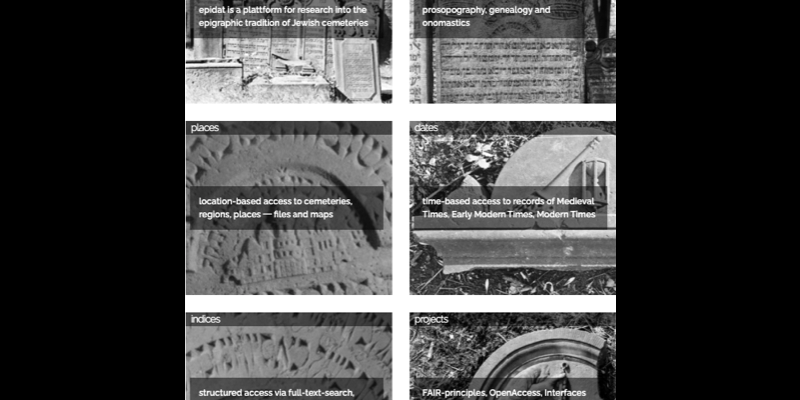epidat ─ Research Platform for Jewish Gravestone Epigraphy [epidat ─ Forschungsplattform für jüdische Grabsteinepigraphik] is both a database and a research platform for Jewish gravestone epigraphy. As a database, epidat is used to inventory, document, edit and present epigraphic holdings with a collection spanning the last nine centuries and six different countries totaling 228 digital editions available online with 39,998 epitaphs (79,422 total image files). As a research platform, epidat is also involved in interdisciplinary research projects and cooperations in the context of digital epigraphy and Jewish Studies and offers its data via open interfaces to other reserachers. While the current interface to view headstones, inscriptions, personal data and the extensive image material on epidat has not changed significantly since 2006, there is a new beta version of the interface currently being developed that offers new functionalities, bilingual menu texts, and is optimised for mobile devices.
(Description adapted from information on project website)
Subject Period (epoch)
Subject Continent(s)
Subject Country(ies)
Topic(s)
Project Type(s)
Project Media
Project Access
Project Status
Project Creator Continent(s)
Project Creator Country(ies)
Project Creator City(ies)


epidat ─ Research Platform for Jewish Gravestone Epigraphy [epidat ─ Forschungsplattform für jüdische Grabsteinepigraphik] is both a database and a research platform for Jewish gravestone epigraphy. As a database, epidat is used to inventory, document, edit and present epigraphic holdings with a collection spanning the last nine centuries and six different countries totaling 228 digital editions available online with 39,998 epitaphs (79,422 total image files). As a research platform, epidat is also involved in interdisciplinary research projects and cooperations in the context of digital epigraphy and Jewish Studies and offers its data via open interfaces to other reserachers. While the current interface to view headstones, inscriptions, personal data and the extensive image material on epidat has not changed significantly since 2006, there is a new beta version of the interface currently being developed that offers new functionalities, bilingual menu texts, and is optimised for mobile devices.
(Description adapted from information on project website)
